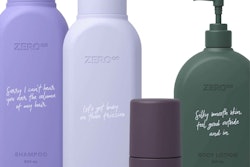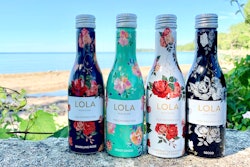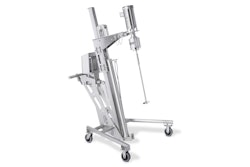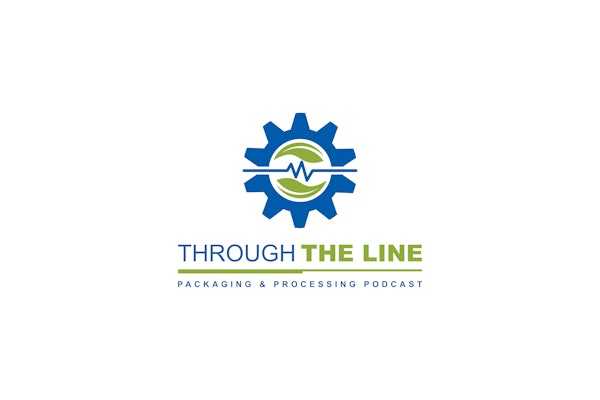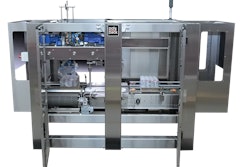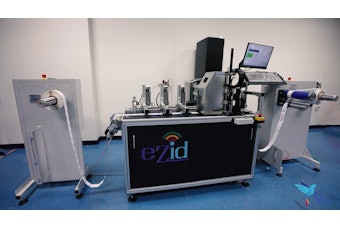Quick hits:
- Beverage giants Coca-Cola and PepsiCo lead the way, with all of the Top 10 maintaining their positions.
- We also highlight the Top 50 Alcoholic Beverage Manufacturers.
- “Health” is the key word in consumer trends, including a significant shift to plant-based alternatives to meat and dairy.
Related to this episode:
- Global 250 Food and Beverage Manufacturers and Global 50 Alcoholic Beverage Manufacturers tables. Note: Tables are posted for 2016-2019. The 2020 tables will be included beginning Oct. 1.
- State of the Industry Report: Global Economy Passes Pre-COVID GDP as Business Investments Pick Up; Risks Remain
- PMMI's State of the Industry report provides key insights into investing in packaging machinery. Learn about key new technologies, sustainability efforts, and automation trends.
 | Read the transcript below: |
Hi, I’m Aaron Hand, Editor-in-Chief of ProFood World, and this is Take Five with ProFood World.
ProFood World’s October issue will be out soon, and that means our annual look at the world’s top food and beverage manufacturers. Commissioned by ProFood World and compiled by market researcher Euromonitor International, our Global 250 report ranks the world’s food and beverage companies by retail sales. Beyond the ranking, it is rich with other details as well, such as the sales figures, the number of manufacturing plants each has, the industries they serve, the brands they produce, and more.
Let’s take a quick look at the top of those rankings. Beverage giants Coca-Cola and PepsiCo lead the way again for 2020. In fact, the Top 10 didn’t budge at all this year, with Nestlé, Mondelēz, Danone, Unilever, Kraft Heinz, Mars, Lactalis, and Ferrero all maintaining their positions from 2019. There’s a little shifting around among the next 10 companies, but by and large, the Top 20 have remained intact.
I find that interesting in a year where so much was shaken up by the COVID-19 pandemic. With consumers largely eating at home instead of restaurants, and also changing the kinds of foods and beverages they were consuming. But the big manufacturers were able to pivot as needed to maintain their positions, although sales were down year over year for several of them. Among those Top 10, only four—Pepsi, Unilever, Kraft Heinz, and Ferrero—actually saw sales growth in 2020 over 2019.
Our online versions of the tables get into even more granular detail, showing how each company’s revenues are split by food or beverage, and by U.S. and global sales. We’ll have the latest versions up on ProFoodWorld.com at the beginning of October.
I say tables and versions, plural, because in addition to the ranking of the top 250 Food and Beverage Manufacturers, our report also details the Top 50 Alcoholic Beverage Manufacturers in the world. Here, U.S.-based Constellation Brands knocked Japan’s Kirin Holdings out of the 10th slot, but otherwise the Top 9 stayed put, led by Anheuser-Busch. In fact, Constellation Brands was the only one of the Top 10 to see any sales growth in 2020.
Shifting away from the tables, let’s talk about the larger trends behind all that data.
If there’s one word that sums it all up, it’s “health.” During their lockdown, many consumers really shifted their relationships with food. Largely, they were trends that were already beginning to take root, but the pandemic really accelerated many of them. In general, consumers are looking for healthier diets. They’re more mindful not only of what they’re eating, but where it’s coming from. They want transparency about how their food is sourced. They’re paying more attention not just to calories, but their macros, trying to get the right balance of carbs, fats, and proteins.
And speaking of proteins… What a shift consumers have made to the world of plant-based alternatives. Interest in plant-based foods—which avoid not only meats but other animal-derived foods such as dairy—was already surging before the pandemic. But COVID-19 gave the sector even more of a boost with the increased focus on personal health, sustainability, food safety, and animal welfare.
Data from the Plant Based Foods Association and The Good Food Institute showed U.S. retail sales of plant-based foods increasing by 27% in 2020, bringing the total market to $7 billion. That’s almost twice as fast as the total U.S. retail food market grew during that pandemic year, which itself grew 15%.
Sales of plant-based meats, specifically, grew 45% in 2020. And here again, it grew twice as fast as conventional meat. Plant-based milk accounts for 35% of the total plant-based food market. It’s a much more established category than the plant-based meats are, but still saw a big boost in 2020—with sales up 20%, again, twice as fast as cow’s milk grew.
All this growth might lead you to believe that there are a whole lot of vegans and vegetarians out there. In fact, they account for only about 6% of the food and beverage market, according to Greg See Hoy, Dedert’s market manager for the plant-based protein industry, who gave a presentation about this sector at the latest Powder Show in Chicago. But what has developed significantly, he says, is the flexitarian sector. In general, flexitarians, which make up almost a third of the market, recognize the benefits of a vegan or vegetarian diet, but still like meat. This is a big reason why several manufacturers are driven to make their plant-based proteins taste more like meat—along the lines of the Beyond Burger or Impossible Chicken Nuggets.
I’m sorry, I got a little excited and took up all our time talking about plant-based trends. But really, many of the trends that are driving consumers toward plant-based are the same trends that are reshaping the industry overall—social conscience issues, agricultural efficiency, health consciousness, and a global population growth.
Thanks a lot for tuning in today. We’ll take this discussion further in the October cover story of ProFood World.




